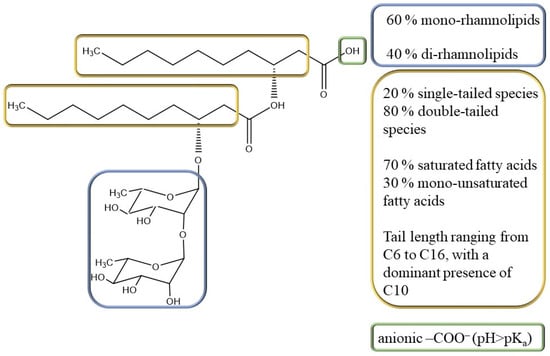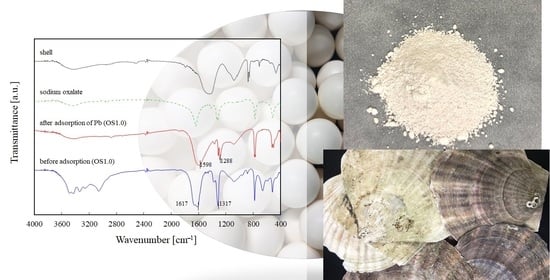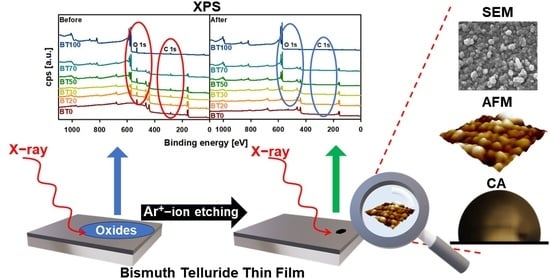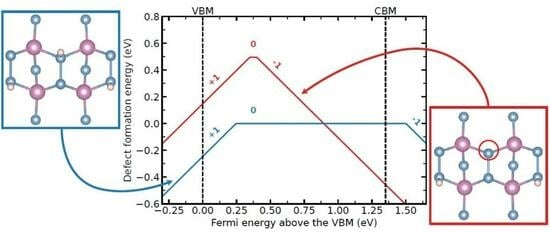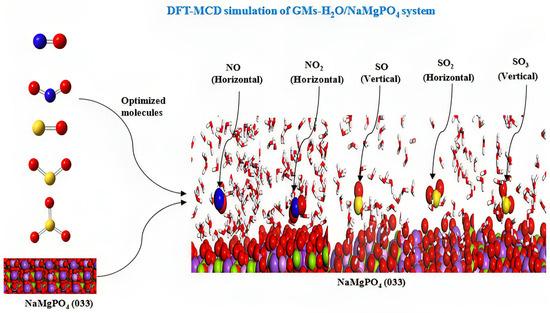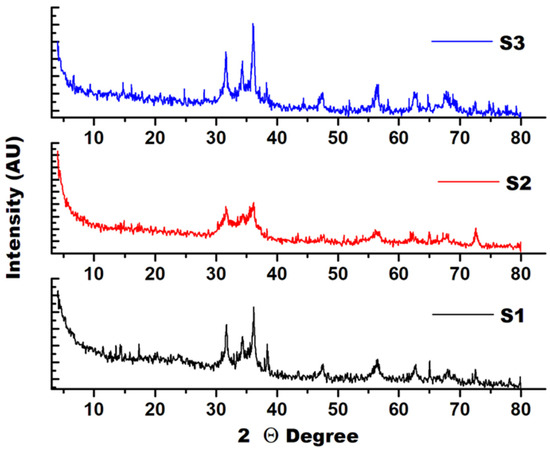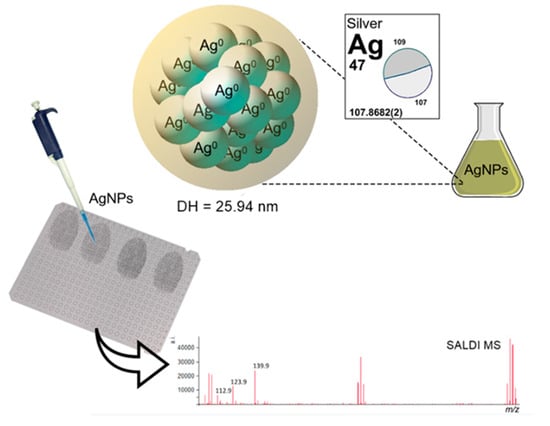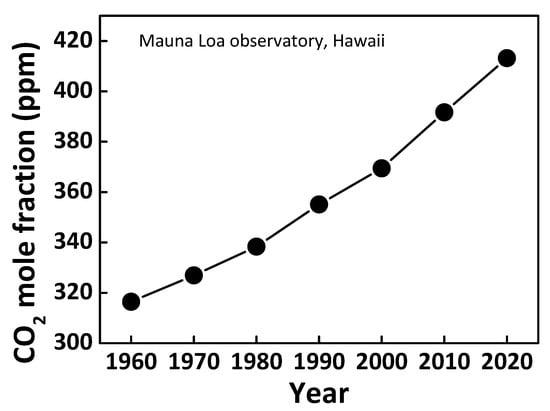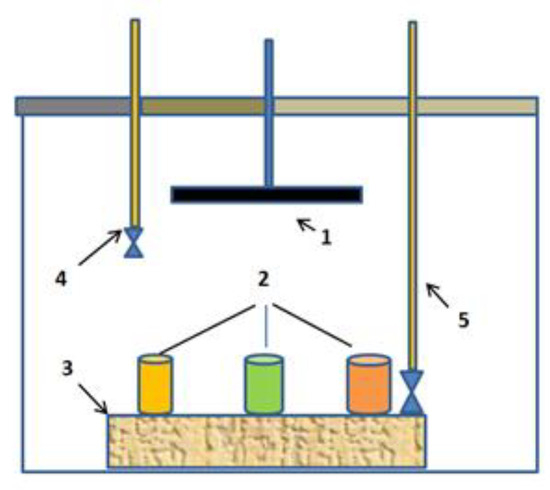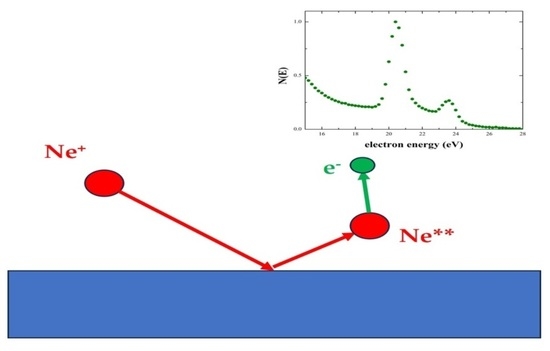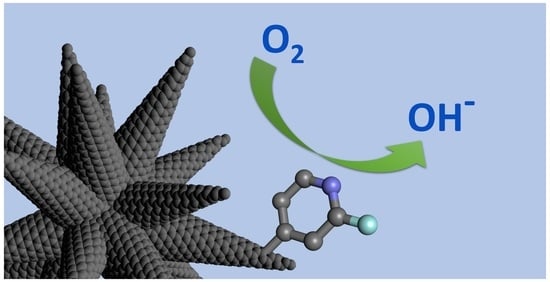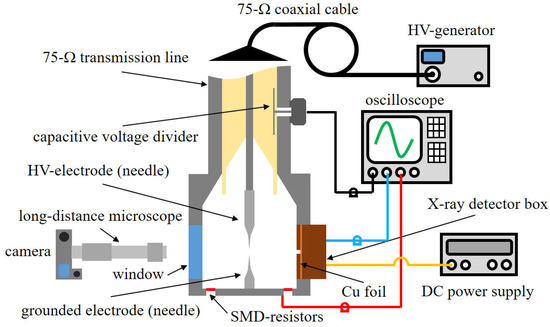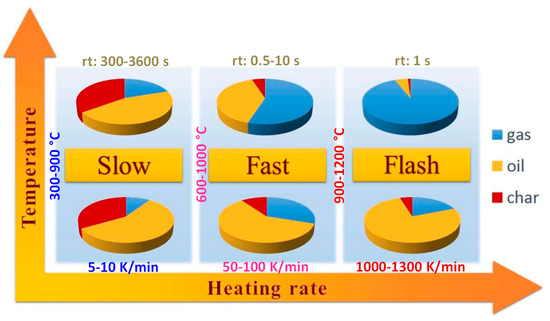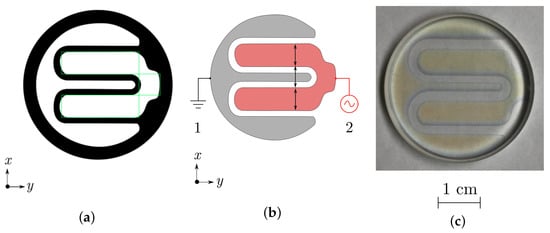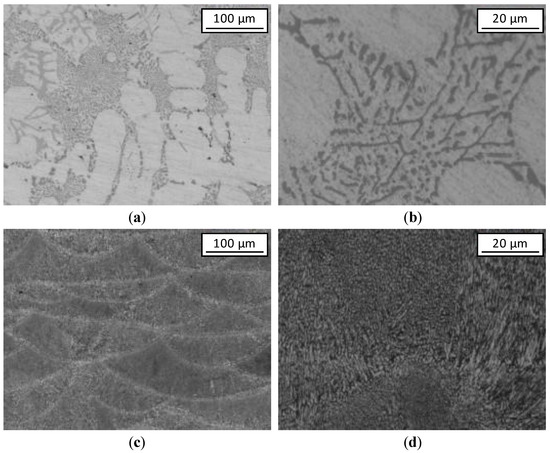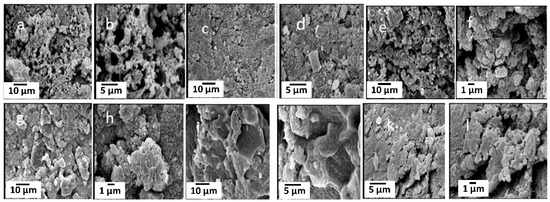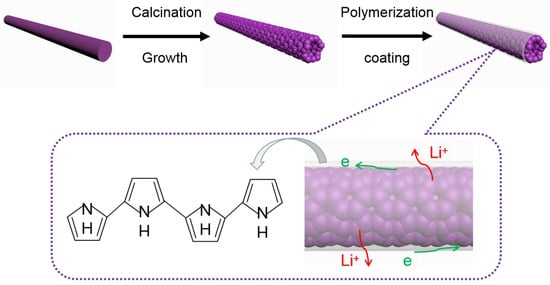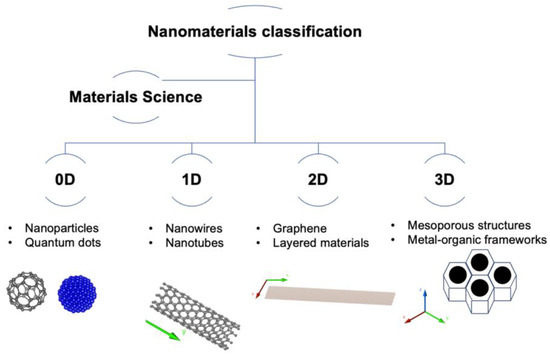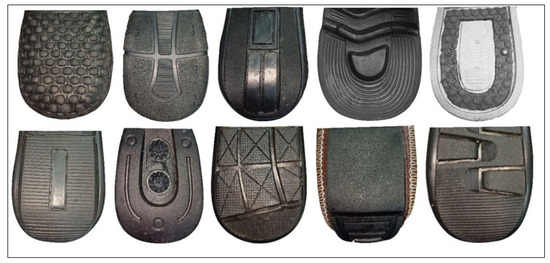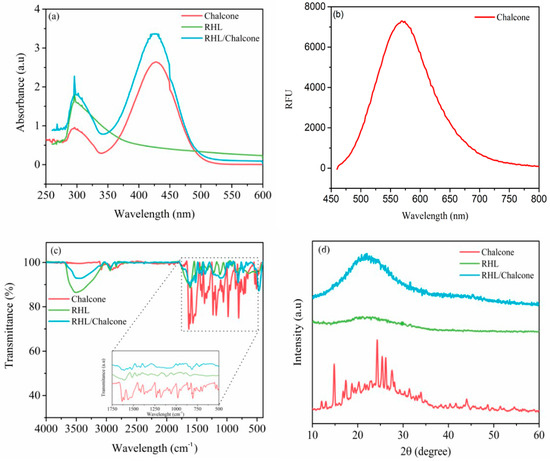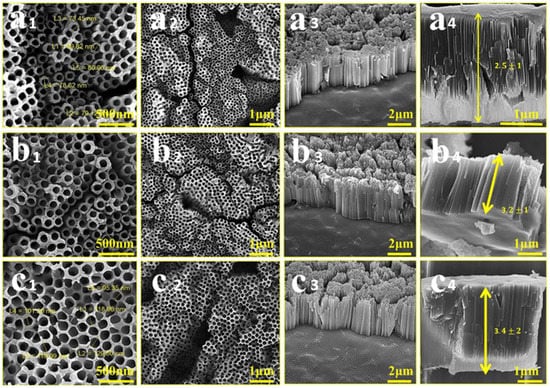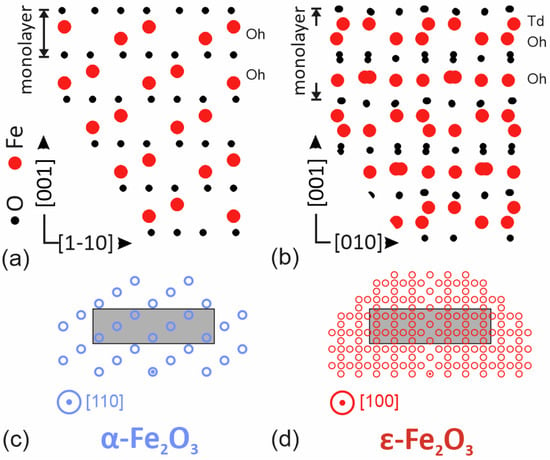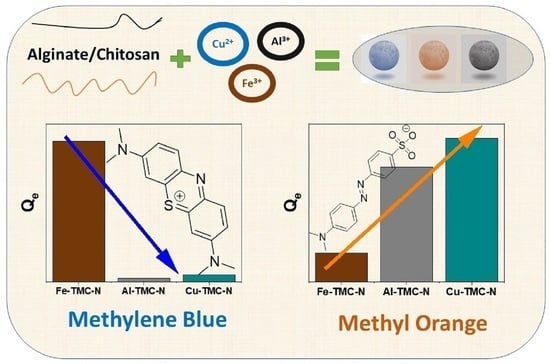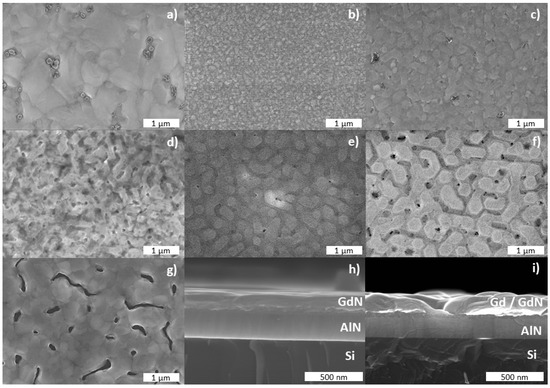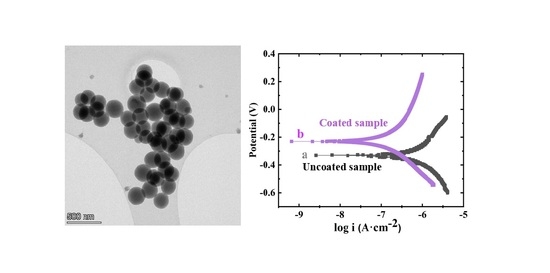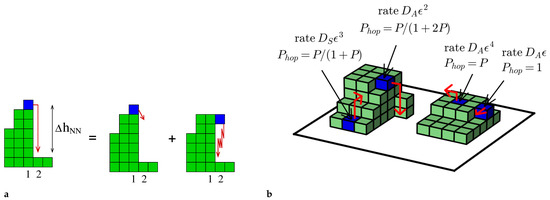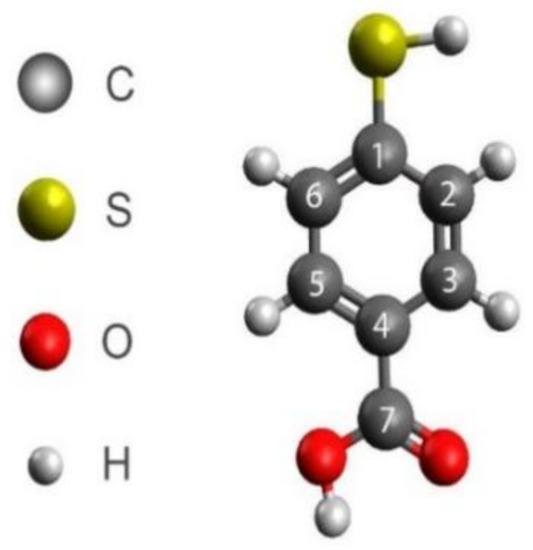Featured Articles for Surfaces
A topical collection in Surfaces (ISSN 2571-9637).
Viewed by 110943
Share This Topical Collection
Editor
Topical Collection Information
Dear Colleagues,
This Topical Collection, as the very first one from the journal, gather and publish articles by leading researchers. New findings and approaches in surfaces/interfaces science, as well as their applications, are expected. Editorial board members will be invited to make contributions from time to time.
Prof. Dr. Gaetano Granozzi
Guest Editor
Manuscript Submission Information
Manuscripts should be submitted online at www.mdpi.com by registering and logging in to this website. Once you are registered, click here to go to the submission form. Manuscripts can be submitted until the deadline. All submissions that pass pre-check are peer-reviewed. Accepted papers will be published continuously in the journal (as soon as accepted) and will be listed together on the collection website. Research articles, review articles as well as short communications are invited. For planned papers, a title and short abstract (about 100 words) can be sent to the Editorial Office for announcement on this website.
Submitted manuscripts should not have been published previously, nor be under consideration for publication elsewhere (except conference proceedings papers). All manuscripts are thoroughly refereed through a single-blind peer-review process. A guide for authors and other relevant information for submission of manuscripts is available on the Instructions for Authors page. Surfaces is an international peer-reviewed open access quarterly journal published by MDPI.
Please visit the Instructions for Authors page before submitting a manuscript.
The Article Processing Charge (APC) for publication in this open access journal is 1600 CHF (Swiss Francs).
Submitted papers should be well formatted and use good English. Authors may use MDPI's
English editing service prior to publication or during author revisions.
Published Papers (45 papers)
Open AccessArticle
Nanoscale Organic Contaminant Detection at the Surface Using Nonlinear Bond Model
by
Hendradi Hardhienata, Muhammad Ahyad, Fasya Nabilah, Husin Alatas, Faridah Handayasari, Agus Kartono, Tony Sumaryada and Muhammad D. Birowosuto
Viewed by 408
Abstract
Environmental pollution from organic dyes such as malachite green and rhodamine B poses significant threats to ecosystems and human health due to their toxic properties. The rapid detection of these contaminants with high sensitivity and selectivity is crucial and can be effectively achieved
[...] Read more.
Environmental pollution from organic dyes such as malachite green and rhodamine B poses significant threats to ecosystems and human health due to their toxic properties. The rapid detection of these contaminants with high sensitivity and selectivity is crucial and can be effectively achieved using nonlinear optical methods. In this study, we combine the Simplified Bond Hyperpolarizability Model (SBHM) and molecular docking (MD) simulations to investigate the Second-Harmonic Generation (SHG) intensity of organic dyes on a silicon (Si(001)) substrate for nanoscale pollutant detection. Our simulations show good agreement with rotational anisotropy (RA) SHG intensity experimental data across all polarization angles, with a total error estimate of 3%. We find for the first time that the SBHM not only identifies the different organic pollutant dyes on the surface, as in conventional SHG detection, but can also determine their relative orientation and different concentrations on the surface. Meanwhile, MD simulations reveal that rhodamine B shows a strong adsorption affinity of
to a single-layer graphene oxide (GO) substrate, primarily through
-
stacking interactions (36 instances) and by adopting a perpendicular molecular orientation. These characteristics significantly enhance SHG sensitivity. A nonlinear susceptibility analysis reveals good agreement between the SBHM and group theory. The susceptibility tensors confirm that the dominant contributions to the SHG signal arise from both the molecular structure and the surface interactions. This underscores the potential of GO-coated silicon substrates for detecting trace levels of organic pollutants with interaction distances ranging from
to
. This approach offers valuable applications in environmental monitoring, combining the sensitivity of SHG with the adsorption properties of GO for nanoscale detection.
Full article
►▼
Show Figures
Open AccessArticle
High-Pressure and High-Temperature Dissolution of Titanium from Titanium and Aluminum Residues: A Comparative Study
by
Srecko Stopic, Duško Kostić, Elif Emil-Kaya, Emircan Uysal, Sebahattin Gürmen, Aleksandar Mitrašinović, Mitar Perušić and Bernd Friedrich
Viewed by 571
Abstract
This study presents a comparative analysis of titanium leaching from tionite (a byproduct of the titanium dioxide production process) and carbothermally reduced red mud (derived from aluminum residues). Tionites from the sulfate process and red mud residue are known for their environmental impacts
[...] Read more.
This study presents a comparative analysis of titanium leaching from tionite (a byproduct of the titanium dioxide production process) and carbothermally reduced red mud (derived from aluminum residues). Tionites from the sulfate process and red mud residue are known for their environmental impacts due to their metal content and acidic/basic nature. This study explored leaching as a method to recover titanium and other metals under high-pressure and high-temperature conditions using sulfuric acid. Experiments were conducted in an autoclave with different parameter changes, like varying oxygen pressure, temperature, and reaction time to optimize metal extraction. The leaching efficiency of titanium was found to be higher in the carbothermal-reduced slag compared to tionite due to the altered mineral phases in the reduced material. XRD and SEM-EDS analyses confirmed the differing leaching behaviors, with titanium compounds in tionite showing greater resistance to dissolution. These findings highlight the importance of thermal pre-treatment for optimizing metal recovery from industrial residues. The main aim of this study is to contribute to the development of sustainable waste management solutions for tionites and red mud, emphasizing the potential of hydrometallurgical methods for metal recovery. The results are expected to inform future research and industrial applications, advancing the recovery of valuable metals while reducing the environmental footprint of titanium and aluminum residue disposal.
Full article
►▼
Show Figures
Open AccessArticle
Photoelectrochemical and Structural Insights of Electrodeposited CeO2 Photoanodes
by
Alberto E. Molina-Lozano, Marcos R. V. Lanza, Pablo Ortiz and María T. Cortés
Viewed by 1444
Abstract
Cerium dioxide (CeO
2) is a promising material for photoelectrochemical applications, requiring a thorough understanding of the interplay between its properties and structure for optimal performance. This study investigated the photoelectrochemical performance of CeO
2 photoanodes immobilized by electrodeposition on glass substrates,
[...] Read more.
Cerium dioxide (CeO
2) is a promising material for photoelectrochemical applications, requiring a thorough understanding of the interplay between its properties and structure for optimal performance. This study investigated the photoelectrochemical performance of CeO
2 photoanodes immobilized by electrodeposition on glass substrates, focusing on the correlation between the annealing temperature and structural, optical, and electrical changes. CeO
2 coatings were obtained via chronoamperometry in an aqueous solution of 25 mM CeCl
3 and 50 mM NaNO₃. The photoelectrochemical characterization included the evaluation of photoactivity, current density, stability, and recombination using linear sweep voltammetry (LSV) and chronoamperometry (CA). Charge transfer resistance, flat-band potential, and capacitance were assessed through impedance spectroscopy. The optimal annealing temperature for this material was found to be 600 °C as it resulted in the lowest charge transfer resistance and increased photocurrent, which was attributed to enhanced crystallinity and variations in the Ce
3+/Ce
4+ ratio.
Full article
►▼
Show Figures
Open AccessArticle
Development of Natural Fungicidal Agricultural Defensives Using Microbial Glycolipid and Vegetable Oil Blends
by
Anderson O. de Medeiros, Maria da Gloria C. da Silva, Attilio Converti, Fabiola Carolina G. de Almeida and Leonie A. Sarubbo
Viewed by 992
Abstract
The use of pesticides causes significant environmental problems, which drives the search for natural and non-toxic alternatives. In this study, a glycolipid biosurfactant (BS), produced by the yeast
Starmerella bombicola ATCC 22214, was utilized as an active ingredient in natural agricultural defensive blends.
[...] Read more.
The use of pesticides causes significant environmental problems, which drives the search for natural and non-toxic alternatives. In this study, a glycolipid biosurfactant (BS), produced by the yeast
Starmerella bombicola ATCC 22214, was utilized as an active ingredient in natural agricultural defensive blends. The mixtures were tested for their fungicidal potential against phytopathogenic fungi isolated from fruits such as papaya, orange, and banana, demonstrating strong inhibition of fungal growth. The genera
Penicillium,
Colletotrichum, and
Aspergillus were the pathogens present in the deterioration of the fruits used in the experiment. The biosurfactant was produced in a fermenter, yielding 10 g/L and reducing the surface tension to 31.56 mN/m, with a critical micelle concentration (CMC) of 366 mg/L. Blends of BS with oleic acid (T1) and lemongrass oil (T2) were found to be effective in controlling fungi. Additionally, the phytotoxicity of these formulations was assessed using
Cucumis anguria (gherkin) seeds, where the blend of BS with castor oil (T4) showed the best performance, promoting seed germination. These results indicate the potential of such mixtures as natural alternatives for fungal control in plants and for application in sustainable agricultural systems.
Full article
►▼
Show Figures
Open AccessArticle
Microplastic-Related Leachate from Recycled Rubber Tiles: The Role of TiO2 Protective Coating
by
Paula Benjak, Lucija Radetić, Ivana Presečki, Ivan Brnardić, Nikola Sakač and Ivana Grčić
Viewed by 1169
Abstract
The extensive global use of rubber results in significant microplastic pollution from the release of tire wear particles and microplastic leachate, impacting the environment, human health, and ecosystems. Waste tires are normally recycled and used for the production of new products, such as
[...] Read more.
The extensive global use of rubber results in significant microplastic pollution from the release of tire wear particles and microplastic leachate, impacting the environment, human health, and ecosystems. Waste tires are normally recycled and used for the production of new products, such as rubber tiles. The presented study aims to show the possibility of further decrease in the negative environmental impact of materials based on recycled rubber. This paper presents the modification of rubber tiles with a titanium dioxide (TiO
2) coating, focusing on surface integrity, rubber particle wear release, and the consequent environmental impact of leachate release. Both reference and modified rubber tiles were subjected to artificial accelerated aging in a solar simulator for 4, 6, and 8 weeks, followed by an abrasion test. The carbonyl index was calculated from FTIR characterization after each time frame to indicate the degradation of organic compounds and chemical changes caused by UV exposure. A 24 h leaching test with a liquid-to-sample ratio of 1:20 was performed on both rubber tile samples prior to and after 8 weeks of aging along with the aged wear particles for the purpose of the non-target screening of released organic leachate by LC/MS QTOF. The results of carbonyl indices showed that the TiO
2 coating contributes to the stabilization of polymer degradation and, to a certain extent, reduces the leaching of organic compounds, such as phthalates. However, the increased wear and release of rubber particles and the subsequent degradation of organic leachates require further in-depth research.
Full article
►▼
Show Figures
Open AccessReview
Supramolecular Chemistry of Polymer-Based Molecular Tweezers: A Minireview
by
Bahareh Vafakish and Lee D. Wilson
Viewed by 984
Abstract
Polymer-based molecular tweezers have emerged as a prominent research area due to their enhanced ability to form host–guest complexes, driven by advancements in their design and synthesis. The impact of the spacer structure on the tweezers is predominant. They can be rigid, flexible,
[...] Read more.
Polymer-based molecular tweezers have emerged as a prominent research area due to their enhanced ability to form host–guest complexes, driven by advancements in their design and synthesis. The impact of the spacer structure on the tweezers is predominant. They can be rigid, flexible, and stimuli-responsive. Herein, a new generation of molecular tweezers is introduced as polymer-based molecular tweezers. The integration of molecular tweezers onto biopolymers has significantly expanded their potential applications, making them promising candidates, especially in drug delivery, owing to their biocompatibility, adaptive structural features, and versatile interaction capabilities. The unique structure of polymer-based molecular tweezers, particularly when integrated with biopolymers, creates a unique nano-environment that enhances their interaction with guest molecules. This minireview focuses on the synthesis and applications of polymer-based molecular tweezers and examines how the incorporation of various spacers affects their binding affinity and specificity. These features highlight the advancement of these polymer-based systems, emphasizing their potential applications, particularly in drug delivery, water treatment technology, and future research opportunities.
Full article
►▼
Show Figures
Open AccessArticle
Eliminating Manifold Pharmaceutical Pollutants with Carbon Nanoparticles Driven via a Short-Duration Ball-Milling Process
by
Tarig G. Ibrahim, Rasmiah S. Almufarij, Babiker Y. Abdulkhair and Mohamed E. Abd Elaziz
Viewed by 1257
Abstract
One of the major problems facing humanity in all parts of the world is water pollution. Since carbon nanoparticles (CPs) are known for their excellent absorbability, this study explored preparing CPs via a facilitated ball-milling protocol. Four CP products were prepared with the
[...] Read more.
One of the major problems facing humanity in all parts of the world is water pollution. Since carbon nanoparticles (CPs) are known for their excellent absorbability, this study explored preparing CPs via a facilitated ball-milling protocol. Four CP products were prepared with the friction enhancer being variated, typically 0-CPs, 2.5-CPs, 5-CPs, and 10-CPs. The four sorbents were characterized using TEM, EDX, XRD, BET, and FTIR methods. The 0-CPs, 2.5-CPs, 5-CPs, and 10-CPs possessed a BET surface area of 113, 139, 105, and 98.5 m
2 g
−1, respectively, and showed a sorption capacity of 55.6, 147.0, 65.8, and 24.6 mg g
−1 when tested with chlorohexidine (CH). Therefore, the 2.5-CPs were selected as the best sorbents among the prepared nanomaterials and employed for further sorption investigations. The CH sorption on the 2.5-CPs followed the pseudo-second-order, and the liquid–film diffusion controlled the CH sorption onto the 2.5-CPs. The Langmuir isotherm model was followed, and the Dubinin–Radushkevich energy was 3.0 kJ mole
−1, indicating a physisorption process. The thermodynamic outputs suggested that CH sorption by 2.5-CPs was favorable. Furthermore, the 2.5-CPs sorbent was tested for treating water samples contaminated with 20 mg L
−1 of ciprofloxacin, dextromethorphan, guaifenesin, metronidazole, ibuprofen, chlorzoxazone, chlorpheniramine malate paracetamol, and hydro-chlorothiazide. The 2.5-CPs showed an average removal efficiency of 94.1% with a removal range of 92.1% to 98.3% and a 2.21 standard deviation value.
Full article
►▼
Show Figures
Open AccessArticle
Fluorine Free Surface Modification of Microfibrillated Cellulose-Clay Composite Films: Effect of Hydrophobicity on Gas Barrier Performance
by
Mohammed Arif Poothanari and Yves Leterrier
Cited by 2 | Viewed by 2266
Abstract
Diffusion barrier composite films based on microfibrillated cellulose (MFC) and clay were developed with attention paid to the influence of thermal annealing and a fluorine-free surface silylation on their microstructure, water contact angle (WCA), mechanical properties, oxygen transmission rate (OTR), and water vapor
[...] Read more.
Diffusion barrier composite films based on microfibrillated cellulose (MFC) and clay were developed with attention paid to the influence of thermal annealing and a fluorine-free surface silylation on their microstructure, water contact angle (WCA), mechanical properties, oxygen transmission rate (OTR), and water vapor transmission rate (WVTR). The OTR of MFC at 23 °C increased from 1.2 to 25.3 cm
3/m
2/day/bar as relative humidity increased from 50% to 80%. Annealing increased the film’s crystallinity, surface roughness, and hydrophobicity, while decreasing its OTR by 20% at 80%RH. The addition of clay led to a 30% decrease of OTR at 80%RH due to partial exfoliation and to a 50% decrease when combined with annealing. Silylation increased the hydrophobicity of surface of the film and its combination with clay and annealing led to a WCA of 146.5°. The combination of clay, annealing, and silylation considerably reduced the OTR at 80%RH to a value of 8 cm
3/m
2/day/bar, and the WVTR at 23 °C and 50%RH from 49 g/m
2/day for MFC to 22 g/m
2/day. The reduction of OTR and WVTR was found to correlate with the increase in surface hydrophobicity of the film, which was attributed to the reduced access of water molecules within the MFC network.
Full article
►▼
Show Figures
Open AccessArticle
Surface and Aggregation Properties of Rhamnolipids in Water–Bioethanol Mixtures: A Step toward Green Formulation Design
by
Rodolfo Esposito, Francesco Taddeo, Vincenzo Russo, Irene Russo Krauss and Gerardino D’Errico
Viewed by 1608
Abstract
Water–ethanol mixtures are largely exploited for many different applications, from industrial processes to pharmaceutical formulations. Surfactants are often added to tune their interfacial properties. Sustainability concerns require redesigning such blends to minimize their environmental impact. A successful approach is to replace synthetic oil-based
[...] Read more.
Water–ethanol mixtures are largely exploited for many different applications, from industrial processes to pharmaceutical formulations. Surfactants are often added to tune their interfacial properties. Sustainability concerns require redesigning such blends to minimize their environmental impact. A successful approach is to replace synthetic oil-based components with affordable unpurified bio-derived alternatives. In this respect, we have characterized aqueous mixtures of bioethanol, obtained by the fermentation of algae, and rhamnolipids, biosurfactants of microbial origin. The physico-chemical characterization of water–bioethanol binary mixtures in terms of refractive index, density, viscosity, and surface tension indicates that bioethanol behaves like pure ethanol with negligible effects of impurities. Analysis of tensiometric titrations shows that, at bioethanol contents higher than 20–30% bioethanol mass percent, rhamnolipid aggregation is impaired, whereas surface adsorption at the water–air interface remains poorly affected. Overall, bio-derived components can be proposed as a promising alternative to oil-derived chemicals in eco-sustainable formulations.
Full article
►▼
Show Figures
Open AccessArticle
Preparation of Adsorbent from Mechanochemical Reaction-Based Waste Seashell with Sodium Oxalate and Its Application in Pb Ion Adsorption
by
Hideo Maruyama
Viewed by 2060
Abstract
Waste seashell (scallop shell)-based adsorbent was prepared via mechanochemical reaction with sodium oxalate using ball milling. The oxalate-modified seashell-based adsorbents (OS) were prepared by varying the molar ratio of calcium and oxalate to 0.5, 1, and 2. Sodium oxalate was used as the
[...] Read more.
Waste seashell (scallop shell)-based adsorbent was prepared via mechanochemical reaction with sodium oxalate using ball milling. The oxalate-modified seashell-based adsorbents (OS) were prepared by varying the molar ratio of calcium and oxalate to 0.5, 1, and 2. Sodium oxalate was used as the aqueous solution in ball milling. Lead ion adsorption was conducted with the prepared adsorbent. The adsorption behavior of lead ions was investigated in terms of adsorption kinetics and adsorption equilibrium. The time course of the amount of Pb adsorbed agreed well with Langmuir rate equation. The adsorption equilibrium relationship of OS adsorbent and Pb agreed well with the Langmuir adsorption isotherm. Increasing with the molar ratio, the saturated amount of Pb adsorbed increased slightly from 5.45 × 10
−3 to 6.23 × 10
−3 mol/g. Under the present experimental conditions, the maximum equilibrium adsorption was 5.93 × 10
−3 mol/g, which is greater than that reported in the literature.
Full article
►▼
Show Figures
Open AccessArticle
Etching and Compositional Ratio Effect on the Surface Properties of Bismuth Telluride Thin Films
by
Jeongho Mun, Sangmin Han, Hee-Seung Yoon, Jisoo Kang, Oliver Jonas, Juyun Park and Yong-Cheol Kang
Cited by 2 | Viewed by 2220
Abstract
Bismuth telluride has garnered considerable attention owing to its versatile properties applicable in thermoelectric and antibacterial domains, as well as its intriguing topological insulating properties. In this work, our group fabricated bismuth telluride thin films with various ratios using radio frequency magnetron sputtering.
[...] Read more.
Bismuth telluride has garnered considerable attention owing to its versatile properties applicable in thermoelectric and antibacterial domains, as well as its intriguing topological insulating properties. In this work, our group fabricated bismuth telluride thin films with various ratios using radio frequency magnetron sputtering. The surface properties of these thin films were thoroughly analyzed by employing a diverse array of analytical techniques, including X-ray photoelectron spectroscopy (XPS), ultraviolet photoelectron spectroscopy (UPS), scanning electron microscopy (SEM), atomic force microscopy (AFM), X-ray diffraction (XRD), four-point probe and contact angle (CA) measurements. Specifically, our XPS findings indicated that Bi is more susceptible to oxidation than Te following Ar
+-ion etching. Pure Te thin films exhibited the highest R
q value of 31.2 nm based on AFM and SEM results due to their larger grain sizes. The XRD patterns revealed a peak at 27.75° for thin films with 20% Te, attributed to its rhombohedral structure. Moreover, thin films with 30% Te yielded the highest weighted average work function with a value of 4.95 eV after etching. Additionally, pristine Bi and Te thin films demonstrated the most robust hydrophobic properties compared to intermediate-composition thin films, as determined by CA measurements.
Full article
►▼
Show Figures
Open AccessArticle
Synthesis of WS2 Ultrathin Films by Magnetron Sputtering Followed by Sulfurization in a Confined Space
by
Florinel Sava, Iosif-Daniel Simandan, Angel-Theodor Buruiana, Amelia Elena Bocirnea, Outman El Khouja, Teddy Tite, Mohamed Yasssine Zaki, Claudia Mihai and Alin Velea
Cited by 2 | Viewed by 2741
Abstract
In the quest for advanced materials suitable for next-generation electronic and optoelectronic applications, tungsten disulfide (WS
2) ultrathin films have emerged as promising candidates due to their unique properties. However, obtaining WS
2 directly on the desired substrate, eliminating the need for
[...] Read more.
In the quest for advanced materials suitable for next-generation electronic and optoelectronic applications, tungsten disulfide (WS
2) ultrathin films have emerged as promising candidates due to their unique properties. However, obtaining WS
2 directly on the desired substrate, eliminating the need for transfer, which produces additional defects, poses many challenges. This paper aims to explore the synthesis of WS
2 ultrathin films via physical vapor deposition (PVD) followed by sulfurization in a confined space, addressing the challenge of film formation for practical applications. Precursor layers of tungsten and WS
2 were deposited by RF magnetron sputtering. Subsequent sulfurization treatments were conducted in a small, closed, graphite box to produce WS
2 films. The physical and chemical properties of these precursor and sulfurized layers were thoroughly characterized using techniques such as X-ray reflectometry (XRR), X-ray diffraction (XRD), Raman spectroscopy, scanning electron microscopy (SEM), and X-ray photoelectron spectroscopy (XPS). The findings reveal notable distinctions in film thickness, structural orientation, and chemical composition, attributable to the different precursor used. Particularly, the sulfurized layers from the tungsten precursor exhibited a preferred orientation of WS
2 crystallites with their (00L) planes parallel to the substrate surface, along with a deviation from parallelism in a small angular range. This study highlights the necessity of precise control over deposition and sulfurization parameters to tailor the properties of WS
2 films for specific technological applications.
Full article
►▼
Show Figures
Open AccessArticle
Substrate Doping and Defect Influence on P-Rich InP(001):H Surface Properties
by
Rachele Sciotto, Isaac Azahel Ruiz Alvarado and Wolf Gero Schmidt
Cited by 7 | Viewed by 2191
Abstract
Density-functional theory calculations on P-rich InP(001):H surfaces are presented. Depending on temperature, pressure and substrate doping, hydrogen desorption or adsorption will occur and influence the surface electronic properties. For
p-doped samples, the charge transition levels of the P dangling bond defects resulting
[...] Read more.
Density-functional theory calculations on P-rich InP(001):H surfaces are presented. Depending on temperature, pressure and substrate doping, hydrogen desorption or adsorption will occur and influence the surface electronic properties. For
p-doped samples, the charge transition levels of the P dangling bond defects resulting from H desorption will lead to Fermi level pinning in the lower half of the band gap. This explains recent experimental data. For
n-doped substrates, H-deficient surfaces are the ground-state structure. This will lead to Fermi level pinning below the bulk conduction band minimum. Surface defects resulting from the adsorption of additional hydrogen can be expected as well, but affect the surface electronic properties less than H desorption.
Full article
►▼
Show Figures
Open AccessArticle
Understanding the Effects of Post-Deposition Sequential Annealing on the Physical and Chemical Properties of Cu2ZnSnSe4 Thin Films
by
Diana-Stefania Catana, Mohamed Yassine Zaki, Iosif-Daniel Simandan, Angel-Theodor Buruiana, Florinel Sava and Alin Velea
Cited by 4 | Viewed by 2051
Abstract
Cu
2ZnSnSe
4 thin films have been synthesized by employing two magnetron-sputtering depositions, interlaced with two sequential post-deposition heat treatments in low vacuum, Sn+Se and Se–rich atmospheres at 550 °C. By employing successive structural analysis methods, namely Grazing Incidence X–Ray Diffraction (GIXRD)
[...] Read more.
Cu
2ZnSnSe
4 thin films have been synthesized by employing two magnetron-sputtering depositions, interlaced with two sequential post-deposition heat treatments in low vacuum, Sn+Se and Se–rich atmospheres at 550 °C. By employing successive structural analysis methods, namely Grazing Incidence X–Ray Diffraction (GIXRD) and Raman Spectroscopy, secondary phases such as ZnSe coexisting with the main kesterite phase have been identified. SEM peered into the surface morphology of the samples, detecting structural defects and grain profiles, while EDS experiments showed off–stoichiometric elemental composition. The optical bandgaps in our samples were calculated by a widely used extrapolation method from recorded transmission spectra, holding values from 1.42 to 2.01 eV. Understanding the processes behind the appearance of secondary phases and occurring structural defects accompanied by finding ways to mitigate their impact on the solar cells’ properties is the prime goal of the research beforehand.
Full article
►▼
Show Figures
Open AccessArticle
DFT and MCDS Outcome for a Comparative Analysis of NO, NO2, SO, SO2 and SO3 Gas Adsorption onto a NaMgPO4 (033) Surface
by
Jamal Attarki, Malika Khnifira, Wafaa Boumya, Hind Hajjaoui, Anass Mahsoune, M’hamed Sadiq, Mounia Achak, Noureddine Barka and Mohamed Abdennouri
Cited by 3 | Viewed by 2207
Abstract
The research purpose of this work is to examine the adsorption interaction of gaseous molecules (GMs), such as NO, NO
2, SO, SO
2, and SO
3, with the surface of sodium magnesium phosphate NaMgPO
4 (033), in a neutral
[...] Read more.
The research purpose of this work is to examine the adsorption interaction of gaseous molecules (GMs), such as NO, NO
2, SO, SO
2, and SO
3, with the surface of sodium magnesium phosphate NaMgPO
4 (033), in a neutral medium, using two different computational methods: density functional theory (DFT) and Monte Carlo dynamic simulation (MCDS). Various quantum and dynamic descriptors, such as global and local quantum descriptors and the radial distribution function (RDF), are also evaluated and discussed. The data obtained revealed that the NO
2 molecule has a small energy gap (0.363 eV) when compared to the other molecules, which means that it is highly reactive and is liable to adsorb, or stick, to the surface of NaMgPO
4 (033). Furthermore, this NO
2 molecule exhibits good adsorption in aqueous media, returning to the lowest global hardness value (0.1815 eV). MCDS predicted adsorption energies of −874.03, −819.94, −924.81, −876.33, and −977.71 kcal/mol for NO, NO
2, SO, SO
2, and SO
3, respectively. These energies are negative, implying that adsorption occurs spontaneously. Thus, the side views indicated which SO, NO, and SO
3 molecules are adsorbed in parallel to NaMgPO
4 and the other SO
2 and NO
2 molecules are adsorbed horizontally. Eventually, the theoretical results reveal that the studied gaseous molecules interact strongly with NaMgPO
4. The result obtained by radial distribution function (RDF) analysis for all complexes below 3.5 Å confirm that the adsorption is of the chemi1cal type.
Full article
►▼
Show Figures
Open AccessArticle
Simple and Intelligent Electrochemical Detection of Ammonia over Cuprous Oxide Thin Film Electrode
by
Samia A. Kosa, Amna N. Khan, Basma Al-Johani, L. A. Taib, M. Aslam, Wafa A. Bawazir, A. Hameed and M. Tahir Soomro
Cited by 8 | Viewed by 2602
Abstract
To realize simple and intelligent electrochemical ammonia (NH
3) detection in water, highly dense colloidal copper nanoparticles (CuNPs) were prepared and subsequently deposited onto a glassy carbon electrode (GCE). The CuNPs/GCE was then placed in an oven at 60 °C to intelligently
[...] Read more.
To realize simple and intelligent electrochemical ammonia (NH
3) detection in water, highly dense colloidal copper nanoparticles (CuNPs) were prepared and subsequently deposited onto a glassy carbon electrode (GCE). The CuNPs/GCE was then placed in an oven at 60 °C to intelligently transform CuNPs into cuprous oxide (Cu
2O) thin film. The colloidal CuNPs were characterized by ultraviolet-visible (UV-Vis) spectroscopy, whereas the fabricated Cu
2O/GCE was subjected to Fourier transform infrared spectroscopy (FTIR), X-ray diffraction (XRD), X-ray photoelectron spectroscopy (XPS), scanning electron microscopy (SEM), and electrochemical impedance spectroscopy (EIS). The XRD of Cu
2O/GCE showed the crystalline nature of the thermally converted Cu
2O thin film, whereas XPS demonstrated that the thin film formed on the surface of GCE was primarily composed of Cu
2O. The SEM images of Cu
2O/GCE revealed Cu
2O crystals with hexapod morphology. The EIS study exhibited substantially higher charger transfer activity of Cu
2O/GCE compared to bare GCE. The drop coating of ammonia (NH
3) solution onto Cu
2O/GCE enabled the fabricated electrode to be utilized as an electrochemical sensor for NH
3 detection in water. The cyclic voltammetric (CV) behavior of NH
3/Cu
2O/GCE was investigated in 0.1 M pH 7 phosphate buffer, which led to the formation of a copper-ammonia complex and revealed the nobility of the fabricated electrode. The square wave voltammetric (SWV) response was linear over the 10 µM and 1000 µM ranges with a detection limit of 6.23 µM and good reproducibility. The NH
3/Cu
2O/GCE displayed high selectivity for the detection of NH
3 in the presence of various coexisting cations and anions in 0.1 M pH 7 phosphate buffer. The recovery of NH
3 in the drinking water sample varied from 98.2% to 99.1%.
Full article
►▼
Show Figures
Open AccessArticle
Biosynthesis, Optical and Magnetic Properties of Fe-Doped ZnO/C Nanoparticles
by
Omar H. Abd-Elkader, Mai Nasrallah, Lotfi Aleya and Mohamed Nasrallah
Cited by 2 | Viewed by 2467
Abstract
Employing a self-combustion method supported by egg white, pure and Fe-doped ZnO/C nanoparticles successfully biosynthesized. XRD, FTIR, Raman, SEM/EDS and TEM measurements were used to characterize the pure and doped systems. The materials under investigation’s optical, surface and magnetic characteristics were recognized. Only
[...] Read more.
Employing a self-combustion method supported by egg white, pure and Fe-doped ZnO/C nanoparticles successfully biosynthesized. XRD, FTIR, Raman, SEM/EDS and TEM measurements were used to characterize the pure and doped systems. The materials under investigation’s optical, surface and magnetic characteristics were recognized. Only one zinc oxide crystalline phase exhibiting a hexagonal shape comparable to wurtzite was present in the systems of pure and Fe-doped ZnO/C. Due to the variation in ionic radii, doping ZnO/C system with iron ions resulted in a decrease in unit cell volume; it revealed that ions of iron had been integrated into the lattice of zinc oxides. FTIR analysis shows characteristic vibration modes related to ZnO and that of carbon groups, confirming the formation of the ZnO/C system. In a perfect match with the IR data, which represent two bands at 1120 and 1399 cm
−1 attributed to carbon groups, the Raman analysis shows that in the freshly manufactured materials, sp
2 and disordered G and D carbon bands have both graphitized. Fe-doping of the ZnO/C system with different amounts of iron ions resulted in the change in the size and agglomeration of the particle’s system. The doped ZnO/C system has a surface area smaller than that of the pure system due to the decrease in both the mean pore radius and the total pore volume. Doping the ZnO/C system with 2 and 5 mol% Fe
2O
3 resulted in optical band gaps expanding from 3.17 eV to 3.27 eV and 3.57 eV, respectively. Due to the doping with iron ions, a magnetic transition from a fully diamagnetic state to a slightly ferromagnetic state was detected.
Full article
►▼
Show Figures
Open AccessArticle
Combined PEO and Spray Pyrolysis Coatings of Phosphate and ZnO for Enhancing Corrosion Resistance in AZ31 Mg Alloy
by
Ashish Kumar Singh, Reinis Drunka, Paula Iesalniece, Ilmars Blumbergs, Ints Steins, Toms-Valdemars Eiduks, Mairis Iesalnieks and Konstantins Savkovs
Viewed by 1897
Abstract
Oxide films produced from plasma electrolytic oxidation are porous in structure. While they have some passivating effect in Mg alloys, the pores still lead to corrosion over long periods of exposure. In this study, spray pyrolysis was used to seal the porous oxide
[...] Read more.
Oxide films produced from plasma electrolytic oxidation are porous in structure. While they have some passivating effect in Mg alloys, the pores still lead to corrosion over long periods of exposure. In this study, spray pyrolysis was used to seal the porous oxide layer developed through the plasma electrolytic oxidation method on Mg alloy AZ31. The PEO coating acted as a good base for the application of spray pyrolysis due to its morphology. Three different kinds of coatings were obtained using different precursors: zinc acetate for ZnO, phosphoric acid for phosphate (P), and a mixture of zinc acetate and sodium phosphate for ZnO+P. The corrosion performance of all three coatings was studied by performing electrochemical impedance and polarization tests on the samples. Mass loss over a duration of 1 week was measured in 3% NaCl solution using immersion gravimetry. The coating with only phosphate (P) was found to be most corrosion-resistant with 52 times lower rate of corrosion and 50 times more polarization potential. The chemical composition of the corrosion products was studied using XRD and SEM-EDS analysis. Mass loss in ZnO+P was the highest, at up to 1.4 and 5.1 times higher than ZnO and P, respectively.
Full article
►▼
Show Figures
Open AccessArticle
Surface-Assisted Laser Desorption/Ionization Mass Spectrometry Analysis of Latent Fingermarks Using Greenly Synthesized Silver Nanoparticles
by
Rodrigo M. Barros, Cínthia C. Bonatto, Marcelo H. S. Ramada and Luciano P. Silva
Cited by 1 | Viewed by 2292
Abstract
Advances in nanotechnology have contributed to many innovative approaches in the forensic sciences, including the development of new techniques and protocols for latent fingermark detection. Among other nanomaterials, metal-based nanoparticles have been explored as suitable developers for fingermarks present on surfaces that challenge
[...] Read more.
Advances in nanotechnology have contributed to many innovative approaches in the forensic sciences, including the development of new techniques and protocols for latent fingermark detection. Among other nanomaterials, metal-based nanoparticles have been explored as suitable developers for fingermarks present on surfaces that challenge traditionally established methods. The present study explored, for the first time in the forensic science literature, the application of greenly synthesized silver nanoparticles (AgNPs) for latent fingermark surface-assisted laser desorption/ionization mass spectrometry (SALDI MS) analysis. A leaf extract of a native plant from the Cerrado biome was used for green synthesis of the AgNPs, and their hydrodynamic diameter, polydispersity index (PdI), and Zeta potential values were evaluated. Latent fingermarks were produced by three distinct donors and treated with α-CHCA matrix or AgNP suspension and were further investigated using commercial matrix assisted laser desorption/ionization (MALDI)-TOF MS equipment in the
m/
z range of 100–1000. Characterization results of the AgNPs indicated an average hydrodynamic diameter of 25.94 ± 0.30 nm, a PdI of 0.659 ± 0.085, and a Zeta potential of −33.4 ± 2.6 mV. The silver ions detected showed a relative intensity at least 20× higher for greenly synthesized AgNPs than for AgNO
3 suspension, which may be advantageous for the detection of molecular species, especially olefins, present in forensic traces. The AgNP-based SALDI MS approach for the analysis of latent fingermarks showed intense ions at
m/
z 106.9, 215.8, and 322.7, referring to silver cation species that have been reported as important internal calibrants. The detection of components from endogenous and exogenous sources in latent fingermarks was achieved using the present approach. Greenly synthesized AgNPs may offer a new cost-effective, eco-friendly, and easily scaled up method for application in the chemical analysis of fingermarks.
Full article
►▼
Show Figures
Open AccessReview
Porous Carbon for CO2 Capture Technology: Unveiling Fundamentals and Innovations
by
Gazi A. K. M. Rafiqul Bari and Jae-Ho Jeong
Cited by 6 | Viewed by 4053
Abstract
Porous carbon is an emerging material for the capture of CO
2 from point sources of emissions due to its high structural, mechanical, and chemical stability, along with reusability advantages. Currently, research efforts are mainly focused on high- or medium-pressure adsorption, rather than
[...] Read more.
Porous carbon is an emerging material for the capture of CO
2 from point sources of emissions due to its high structural, mechanical, and chemical stability, along with reusability advantages. Currently, research efforts are mainly focused on high- or medium-pressure adsorption, rather than low-pressure or DAC (direct air capture) conditions. Highly porous and functionalized carbon, containing heteroatoms (N, O, etc.), is synthesized using different activation synthesis routes, such as hard template, soft template, and chemical activation, to achieve high CO
2 capture efficiency at various temperatures and pressure ranges. Fundamental pore formation mechanisms with different activation routes have been evaluated and explored. Higher porosity alone can be ineffective without the presence of proper saturated diffusion pathways for CO
2 transfer. Therefore, it is imperative to emphasize more rational multi-hierarchical macro-/meso-/micro-/super-/ultra-pore design strategies to achieve a higher utilization efficiency of these pores. Moreover, the present research primarily focuses on powder-based hierarchical porous carbon materials, which may reduce the efficiency of the capture performance when shaping the powder into pellets or fixed-bed shapes for applications considered. Therefore, it is imperative to develop a synthesis strategy for pelletized porous carbon and to explore its mechanistic synthesis route and potential for CO
2 capture.
Full article
►▼
Show Figures
Open AccessArticle
Vapor–Gas Deposition of Polymer Coatings on Metals from Azeotropic Solutions of Organosilanes
by
Yu. B. Makarychev
Viewed by 1747
Abstract
The mechanism of the vapor–gas deposition of vinyltrimethoxysilane (VS) and ethylene glycol (EG) from azeotropic solutions is investigated, which allows a reduction of the evaporation temperature of the components of working mixtures. The need for such studies is associated with the development of
[...] Read more.
The mechanism of the vapor–gas deposition of vinyltrimethoxysilane (VS) and ethylene glycol (EG) from azeotropic solutions is investigated, which allows a reduction of the evaporation temperature of the components of working mixtures. The need for such studies is associated with the development of a new direction in the technology of vapor–gas deposition of polymer coatings. Methods have been developed for monitoring the chemical composition of working solutions in evaporators using optical spectroscopy, which makes it possible to calculate the partial pressures of vapor-phase components. Based on these studies, compositions of working solutions are proposed that allow the equalization of the partial pressures of the components of working mixtures with a large difference in the boiling point. With the aid of vapor–gas deposition, siloxane coatings on low-carbon steel were obtained, the protective properties of which exceeded the treatment with volatile inhibitors of the adsorption type by two to three orders of magnitude. A new method of vapor–gas deposition of non-volatile powder inhibitors on metals is proposed. Chemical compositions of siloxane coatings were determined using XPS, and mechanisms of interaction of VS with the polymerization promoters ethylene glycol and 1-hydroxy ethylidene-1,1-diphosphonic acid (HEDP) were proposed.
Full article
►▼
Show Figures
Open AccessArticle
Spectra of Low Energy Electrons Emitted in the Interaction of Slow Ne+ Ions with Mg Surfaces
by
Pierfrancesco Riccardi and Catherine A. Dukes
Cited by 2 | Viewed by 1621
Abstract
We measured spectra of low energy electrons emitted in the interaction of singly charged Ne
+ ions with the Mg surface at incident ion energies ranging from 50 eV to 4 keV. The study examines issues related to the excitation of both the
[...] Read more.
We measured spectra of low energy electrons emitted in the interaction of singly charged Ne
+ ions with the Mg surface at incident ion energies ranging from 50 eV to 4 keV. The study examines issues related to the excitation of both the surface and the bulk plasmons of the target. We will also focus on the dynamics of the production of the singlet Ne2p
4(
1D)3s
2 and triplet Ne2p
4(
3P)3s
2 autoionizing states of projectiles scattered in a vacuum. The threshold behavior of the autoionization lines show that double excitation occurs simultaneously in a single scattering. The predominant excitation of the triplet state indicates the importance of charge rearrangement and the electron correlation effects during the collisional excitation.
Full article
►▼
Show Figures
Open AccessArticle
Nitrogen- and Fluorine-Doped Carbon Nanohorns as Efficient Metal-Free Oxygen Reduction Catalyst: Role of the Nitrogen Groups
by
Elisa Tosin, Teresa Gatti, Stefano Agnoli, Laura Calvillo and Enzo Menna
Viewed by 1906
Abstract
The search of active, stable and low costs catalysts for the oxygen reduction reaction (ORR) is crucial for the extensive use of fuel cells and metal–air batteries. The development of metal-free catalysts, instead of platinum-based materials, can dramatically reduce the cost and increase
[...] Read more.
The search of active, stable and low costs catalysts for the oxygen reduction reaction (ORR) is crucial for the extensive use of fuel cells and metal–air batteries. The development of metal-free catalysts, instead of platinum-based materials, can dramatically reduce the cost and increase the efficiency of these devices. In this work, carbon nanohorns (CNHs) have been covalently functionalized with N-containing heterocycles by the Tour reaction protocol and tested as metal-free ORR catalysts. The insertion of N-functionalities favored the complete reduction of oxygen to hydroxyl ions, while their absence favored the production of hydrogen peroxide. With the aim of determining the N-species responsible for the ORR activity of CNHs, photoemission and electrochemical measurements were combined. Results suggest that protonated N is the main species involved in the ORR process, facilitating the adsorption of oxygen, with their consequent reduction to neutral hydrogenated N species.
Full article
►▼
Show Figures
Open AccessArticle
Thin Luminous Tracks of Particles Released from Electrodes with A Small Radius of Curvature in Pulsed Nanosecond Discharges in Air and Argon
by
Victor F. Tarasenko, Dmitry V. Beloplotov, Alexei N. Panchenko and Dmitry A. Sorokin
Cited by 5 | Viewed by 1803
Abstract
Features of the nanosecond discharge development in a non-uniform electric field are studied experimentally. High spatial resolution imaging showed that thin luminous tracks of great length with a cross-section of a few microns are observed against the background of discharge glow in air
[...] Read more.
Features of the nanosecond discharge development in a non-uniform electric field are studied experimentally. High spatial resolution imaging showed that thin luminous tracks of great length with a cross-section of a few microns are observed against the background of discharge glow in air and argon. It has been established that the detected tracks are adjacent to brightly luminous white spots on the electrodes or in the vicinity of these spots, and are associated with the flight of small particles. It is shown that the tracks have various shapes and change from pulse to pulse. The particle tracks may look like curvy or straight lines. In some photos, they can change their direction of movement to the opposite. It was found that the particle’s track abruptly breaks and a bright flash is visible at the break point. The color of the tracks differs from that of the spark leaders, while the bands of the second positive nitrogen system dominate in the plasma emission spectra during the existence of a diffuse discharge. Areas of blue light are visible near the electrodes as well. The development of glow and thin luminous tracks in the gap during its breakdown is revealed using an ICCD camera. Physical reasons for the observed phenomena are discussed.
Full article
►▼
Show Figures
Open AccessReview
Surface Treatment of Biochar—Methods, Surface Analysis and Potential Applications: A Comprehensive Review
by
Marlena Gęca, Ahmed M. Khalil, Mengqi Tang, Arvind K. Bhakta, Youssef Snoussi, Piotr Nowicki, Małgorzata Wiśniewska and Mohamed M. Chehimi
Cited by 19 | Viewed by 5452
Abstract
In recent years, biochar has emerged as a remarkable biosourced material for addressing global environmental, agricultural, biomedical, and energy challenges. However, the performances of biochar rest in part on finely tuning its surface chemical properties, intended to obtain specific functionalities. In this review,
[...] Read more.
In recent years, biochar has emerged as a remarkable biosourced material for addressing global environmental, agricultural, biomedical, and energy challenges. However, the performances of biochar rest in part on finely tuning its surface chemical properties, intended to obtain specific functionalities. In this review, we tackle the surface treatment of biochar with silane and other coupling agents such as diazonium salts, titanates, ionic/non-ionic surfactants, as well as nitrogen-containing (macro)molecules. We summarize the recent progress achieved mostly in the last five years and correlate the nature and extent of functionalization to eye-catchy end applications of the surface-engineered biochar.
Full article
►▼
Show Figures
Open AccessArticle
Charged Hybrid Microstructures in Transparent Thin-Film ITO Traps: Localization and Optical Control
by
Dmitrii Shcherbinin, Vadim Rybin, Semyon Rudyi, Aliaksei Dubavik, Sergei Cherevkov, Yuri Rozhdestvensky and Andrei Ivanov
Cited by 5 | Viewed by 2272
Abstract
In the present study, we propose a new transparent thin-film ITO surface radio-frequency (RF) trap. Charged hybrid microstructures were localized in the developed ITO trap. We show, analytically and experimentally, that the position of the localization zones in the trapped hybrid structure are
[...] Read more.
In the present study, we propose a new transparent thin-film ITO surface radio-frequency (RF) trap. Charged hybrid microstructures were localized in the developed ITO trap. We show, analytically and experimentally, that the position of the localization zones in the trapped hybrid structure are stable. The transfer of charged particles between localization zones was studied under the action of gravity-compensating laser radiation. We highlight the advantages of transparent thin-film ITO traps to investigate and manipulate charged particles.
Full article
►▼
Show Figures
Open AccessArticle
Pulsed Current Effect on the Hard Anodizing of an AlSi10Mg Aluminum Alloy Obtained via Additive Manufacturing
by
Elisa Dallari, Massimiliano Bononi, Annalisa Pola, Marialaura Tocci, Paolo Veronesi and Roberto Giovanardi
Cited by 2 | Viewed by 4135
Abstract
The hard anodizing treatments of cast Al-Si alloys are notoriously difficult. Indeed, their microstructural features hinder the growth of a uniform, compact, and defect-free anodic oxide. In this paper, AlSi10Mg samples, produced via Gravity Casting (GC) and Additive Manufacturing, i.e., Laser Powder Bed
[...] Read more.
The hard anodizing treatments of cast Al-Si alloys are notoriously difficult. Indeed, their microstructural features hinder the growth of a uniform, compact, and defect-free anodic oxide. In this paper, AlSi10Mg samples, produced via Gravity Casting (GC) and Additive Manufacturing, i.e., Laser Powder Bed Fusion (L-PBF), were hard anodized in a sulfuric acid bath, in order to verify how the particular microstructure obtained via L-PBF affects the thickness, hardness, compactness, and defectiveness of the anodic oxide. Moreover, for the first time, Pulsed Direct Current (PDC) procedures were used to perform the hard anodizing treatments on additively manufactured AlSi10Mg alloy. Several combinations of temperature and electrical parameters, i.e., current density, frequency, and Duty Cycle, were tested. The anodized samples were characterized through optical microscopy analysis, Scanning Electron Microscopy (SEM) analysis, and accelerated corrosion tests, i.e., Potentiodynamic Polarization (POL) and Electrochemical Impedance Spectroscopy (EIS) measurements. The PDC procedures allowed improvement of the compromise between evenness, compactness, and defectiveness. Among the attempted PDC procedures, a specific combination of electrical parameters and temperature allowed the best results to be obtained, i.e., the highest hardness and the lowest volumetric expansion values without compromising the oxide quality rating and the corrosion resistance behavior. However, none of the attempted PCD strategies allowed the hardness values obtained on samples produced via GC to be reached.
Full article
►▼
Show Figures
Open AccessArticle
Synthesis, Characterization of Some Conductive Aromatic Polyamides/Fe3O4 NPs/ITO, and Their Utilization for Methotrexate Sensing
by
Mona A. Abdel-Rahman, Waleed A. El-Said, Eman M. Sayed and Aboel-Magd A. Abdel-Wahab
Cited by 4 | Viewed by 2315
Abstract
Here, we have synthesized four series of polyamide-conductive polymers and used them to modify Fe
3O
4 NPs/ITO electrodes. The ability of the modified electrodes to detect methotrexate (MTX) anticancer drug electrochemically was investigated. Synthesis of the target-conducting polyamides, P1a–d, P2a–d, P3a,
[...] Read more.
Here, we have synthesized four series of polyamide-conductive polymers and used them to modify Fe
3O
4 NPs/ITO electrodes. The ability of the modified electrodes to detect methotrexate (MTX) anticancer drug electrochemically was investigated. Synthesis of the target-conducting polyamides, P1a–d, P2a–d, P3a, P3b, P3d, and P4c-d, based on different aromatic moieties, such as ethyl 4-(2-(4H-pyrazol-4-ylidene)hydrazinyl)benzoate, diphenyl sulfone, diphenyl ether or phenyl, has been achieved. They were successfully prepared in good yield via solution–polycondensation reaction of the diamino monomers with different dicarboxylic acid chlorides in the presence of N-methyl-2-pyrrolidone (NMP) as a solvent and anhydrous LiCl as a catalyst. A model compound
4 was synthesized from one mole of ethyl-4-(2-(3, 5-diamino-4H-pyrazol-4-ylidene)hydrazinyl) benzoate (diamino monomer) (3) with two moles benzoyl chloride. The structure of the synthesized monomers and polymers was confirmed by elemental and spectral analyses. In addition, thermogravimetric analysis evaluated the thermal stabilities of these polyamides. Furthermore, the morphological properties of selected polyamides were examined using an scanning electron microscope. Polyamide/Fe
3O
4/ITO electrodes were prepared, and the electrochemical measurements were performed to measure the new polyamides’ conductivity and to detect the MTX anticancer drug in phosphate buffer saline using cyclic voltammetry. The polyamides (P3b and P4b)/Fe
3O
4/ITO electrodes showed the highest sensitivity and reversibility towards MTX.
Full article
►▼
Show Figures
Open AccessReview
Electron Spectroscopy of Charge Exchange Effects in Low Energy Ion Scattering at Surfaces: Case Studies of Heavy Ions at Al Surface
by
Pierfrancesco Riccardi
Cited by 5 | Viewed by 2184
Abstract
This work discusses studies of electron emissions during the interaction of low energy (in the keV energy range and below) singly charged ions with Aluminum surfaces. Analysis of the spectra provides insight into the electronic excitation processes and the dynamics of the interaction
[...] Read more.
This work discusses studies of electron emissions during the interaction of low energy (in the keV energy range and below) singly charged ions with Aluminum surfaces. Analysis of the spectra provides insight into the electronic excitation processes and the dynamics of the interaction of the projectiles with the surface excitation. The work is primarily focused on the clarification of the role of electron promotion in charge exchange processes that occur during the cascade of atomic collisions. The work highlights the importance of the solid environment and of electron correlation in the understanding of charge exchange and energy deposition in ion-solids interactions.
Full article
►▼
Show Figures
Open AccessArticle
In Situ Gas-Phase Polymerization of Polypyrrole-Coated Lithium-Rich Nanotubes for High-Performance Lithium-Ion Batteries
by
Yangwen Chen, Beibei Sun, Xinchang Wang, Junmin Xu, Liwei Zhang and Jipeng Cheng
Cited by 1 | Viewed by 2111
Abstract
Conductive polymer polypyrrole (PPy)-coated lithium-rich manganese-based Li
1.2Mn
0.54Ni
0.13Co
0.13O
2 (LMNCO) nanotube cathode materials were synthesized by electrospinning and subsequently subjected to low-temperature vapor-phase polymerization. X-ray diffraction (XRD), scanning electron microscopy (SEM) and high-resolution transmission electron microscopy
[...] Read more.
Conductive polymer polypyrrole (PPy)-coated lithium-rich manganese-based Li
1.2Mn
0.54Ni
0.13Co
0.13O
2 (LMNCO) nanotube cathode materials were synthesized by electrospinning and subsequently subjected to low-temperature vapor-phase polymerization. X-ray diffraction (XRD), scanning electron microscopy (SEM) and high-resolution transmission electron microscopy (HRTEM) results confirm that the successful coating of the PPy layer (~2 nm) on the surface of LMNCO nanotubes did not destroy their morphologies or structures. Electrochemical tests indicate that the electrochemical performance of PPy-coated LMNCO nanotubes has been significantly enhanced. At a rate of 1 C, the discharge capacity of the PPy-coated LMNCO cell is 200.1 mAh g
−1, and the capacity retention is 99% after 120 cycles. This excellent stability is attributed to the inhibition of side reactions and the protective function of the tubular structure due to the PPy coating layer. Additionally, the rate capability is also improved at a high current density due to the higher electronic and ionic conductivity.
Full article
►▼
Show Figures
Open AccessArticle
Study on High-Speed Machining of 2219 Aluminum Utilizing Nanoparticle-Enhanced Minimum Quantity Lubrication (MQL) Technique
by
Sagil James and Mehrshad Mazaheri
Cited by 5 | Viewed by 2471
Abstract
High-speed machining processes are significantly affected by the accumulation of heat generated by friction in the cutting zone, leading to reduced tool life and poor quality of the machined product. The use of cutting fluids helps to draw the heat out of the
[...] Read more.
High-speed machining processes are significantly affected by the accumulation of heat generated by friction in the cutting zone, leading to reduced tool life and poor quality of the machined product. The use of cutting fluids helps to draw the heat out of the area, owing to their cooling and lubricating properties. However, conventional cutting fluid usage leads to considerable damage to human health and the environment, in addition to increasing overall manufacturing costs. In recent years, minimum quantity lubrication (MQL) has been used as an alternative lubricating strategy, as it significantly reduces cutting fluid consumption and eliminates coolant treatment/disposal needs, thereby reducing operational costs. In this study, we investigated microstructural surface finishing and heat generation during the high-speed cutting process of 2219 aluminum alloy using an MQL nanofluid. 2219 aluminum alloy offers an enhanced strength-to-weight ratio and high fracture toughness and is commonly used in a wide range of aerospace and other high-temperature applications. However, there is no relevant literature on MQL-based high-speed machining of these materials. In this study, we examined flood coolant and five different MQL nanofluids made by synthesizing 0.2% to 2% concentrations of Al
2O
3 nanoparticles into ultra-food-grade mineral oil. The study results reveal the chemistry between the MQL of choice and the corresponding surface finishing, showing that the MQL nanofluid with a 0.5% concentration of nanoparticles achieved the most optimal machining result. Furthermore, increasing the nanoparticle concentration does result in any further improvement in the machining result. We also found that adding a 0.5% concentration of nanoparticles to the coolant helped to reduce the temperature at the workpiece–tool interface, obtaining a good surface finish.
Full article
►▼
Show Figures
Open AccessReview
Revisiting Current Trends in Electrode Assembly and Characterization Methodologies for Biofilm Applications
by
Luis Alberto Estudillo-Wong, Claudia Guerrero-Barajas, Jorge Vázquez-Arenas and Nicolas Alonso-Vante
Cited by 2 | Viewed by 3429
Abstract
Microbial fuel cell (MFC) is a sustainable technology resulting from the synergism between biotechnology and electrochemistry, exploiting diverse fundamental aspects for the development of numerous applications, including wastewater treatment and energy production. Nevertheless, these devices currently present several limitations and operational restrictions associated
[...] Read more.
Microbial fuel cell (MFC) is a sustainable technology resulting from the synergism between biotechnology and electrochemistry, exploiting diverse fundamental aspects for the development of numerous applications, including wastewater treatment and energy production. Nevertheless, these devices currently present several limitations and operational restrictions associated with their performance, efficiency, durability, cost, and competitiveness against other technologies. Accordingly, the synthesis of nD nanomaterials (n = 0, 1, 2, and 3) of particular interest in MFCs, methods of assembling a biofilm-based electrode material, in situ and ex situ physicochemical characterizations, electrochemistry of materials, and phenomena controlling electron transfer mechanisms are critically revisited in order to identify the steps that determine the rate of electron transfer, while exploiting novel materials that enhance the interaction that arises between microorganisms and electrodes. This is expected to pave the way for the consolidation of this technology on a large scale to access untapped markets.
Full article
►▼
Show Figures
Open AccessArticle
Development of a Portable Device for Surface Traction Characterization at the Shoe–Floor Interface
by
Shubham Gupta, Ayush Malviya, Subhodip Chatterjee and Arnab Chanda
Cited by 12 | Viewed by 2792
Abstract
Slip and fall accidents are widespread in workplaces and on walkways. Slipping is generally initiated by a sudden change in the flooring properties or due to a low available traction at the shoe–floor interface. To measure shoe-floor traction, mechanical slip and fall risk
[...] Read more.
Slip and fall accidents are widespread in workplaces and on walkways. Slipping is generally initiated by a sudden change in the flooring properties or due to a low available traction at the shoe–floor interface. To measure shoe-floor traction, mechanical slip and fall risk estimation devices are typically employed. However, to date, such existing devices are lab-based, bulky, and are unable to simulate realistic slip biomechanics and measure whole footwear traction in realistic contaminated floorings at the same time. Moreover, these devices are expensive and not available in low- or lower-middle-income countries with limited awareness regarding slip testing. To overcome these challenges, in this work, a biofidelic, portable, and low-cost slip testing device was developed. A strategic three-part subassembly was designed for the application of normal load, slipping speed, and heel strike angle for its modularity. The developed slip tester was extensively tested and validated for its performance using 10 formal footwears and two floorings, under dry and wet conditions. The results indicated that the slip tester was accurate, repeatable, and reliable in differentiating traction measurements across varying combinations of shoes, contaminants, and floorings. The instrumentation performance of the slip tester was found to also capture the differences between different shoe tread patterns in the presence of fluid films. The developed device is anticipated to significantly impact the clinical, industrial, and commercial performance testing of footwear traction in realistic slippery flooring conditions, especially in the low- or middle-income countries.
Full article
►▼
Show Figures
Open AccessArticle
Traction Performance of Common Formal Footwear on Slippery Surfaces
by
Shubham Gupta, Subhodip Chatterjee, Ayush Malviya and Arnab Chanda
Cited by 12 | Viewed by 3115
Abstract
Traumatic injuries caused due to slipping and falling are prevalent in India and across the globe. These injuries not only hamper quality of life but are also responsible for huge economic and compensation burdens. Unintentional slips usually occur due to inadequate traction between
[...] Read more.
Traumatic injuries caused due to slipping and falling are prevalent in India and across the globe. These injuries not only hamper quality of life but are also responsible for huge economic and compensation burdens. Unintentional slips usually occur due to inadequate traction between the shoe and floor. Due to the economic conditions in low and middle-income countries, the public tends to buy low-cost footwear as an alternative to costly slip-resistant shoes. In this study, ten high-selling formal shoes under $25 were considered. These shoes were tested on three commonly available dry floorings and across contaminated common floor surfaces (i.e., water and floor cleaners). The traction performance of the shoes was quantified by using a biofidelic slip tester. The majority of formal shoes were not found to produce the slip-resistant performance across common slippery surfaces. Shoes with softer outsoles exhibited increased slip-resistant performance (R
2 = 0.91). Shoe outsoles with less-to-no treads at the heel region showed poor traction performance as compared to other shoes. The apparent contact area was found as an important metric influencing the slip risks in dry and wet slipping conditions (R
2 = 0.88). This research is anticipated to help the public and footwear manufacturers select safer shoes to reduce slip-and-fall incidents.
Full article
►▼
Show Figures
Open AccessCommunication
Green Composites from Thiophene Chalcones and Rice Husk Lignin: An Alternative of Powder for Latent Fingermark
by
Bruno Nunes da Rosa, Marcelo Pereira da Rosa, Tais Poletti, Nathalia Pereira Koltz de Lima, Guilherme Kurz Maron, Bruno Vasconcellos Lopes, Kristiane de Cássia Mariotti, Paulo Henrique Beck, Neftali Lenin Villarreal Carreno and Claudio Martin Pereira de Pereira
Cited by 3 | Viewed by 2539
Abstract
This study reports a route to obtaining a novel and cost-effective rice husk-derived lignin/thiophene chalcone green composite for application in forensic science as a fingermark developer through high energy milling. The material was properly characterized by UV-Vis, IR, fluorescence, X-ray diffraction and scanning
[...] Read more.
This study reports a route to obtaining a novel and cost-effective rice husk-derived lignin/thiophene chalcone green composite for application in forensic science as a fingermark developer through high energy milling. The material was properly characterized by UV-Vis, IR, fluorescence, X-ray diffraction and scanning electron microscopy. The product provided clear and sharp images of latent fingermarks with minimal background staining, revealing all ridge details. Thus, the composite presented good performance as a fingermark developer, becoming an interesting alternative to being applied as a technological, reproducible and renewable product.
Full article
►▼
Show Figures
Open AccessReview
A Review on the Fabrication and Characterization of Titania Nanotubes Obtained via Electrochemical Anodization
by
Syeda Ammara Batool, Muhammad Salman Maqbool, Muhammad Awais Javed, Akbar Niaz and Muhammad Atiq Ur Rehman
Cited by 27 | Viewed by 4276
Abstract
Recently, titania nanotubes (TNTs) have been extensively studied because both their functional properties and highly controllable morphology make them important building blocks for understanding nanoscale phenomena and realizing nanoscale devices. Compared with sol–gel and template-assisted methods, electrochemical anodization is a simple, cost-effective, and
[...] Read more.
Recently, titania nanotubes (TNTs) have been extensively studied because both their functional properties and highly controllable morphology make them important building blocks for understanding nanoscale phenomena and realizing nanoscale devices. Compared with sol–gel and template-assisted methods, electrochemical anodization is a simple, cost-effective, and low-temperature technique offering additional advantages such as straightforward processing and ease of scale-up. This review focuses on the process modalities and underlying mechanism of electrochemical anodization to achieve a different set of TNTs for a variety of applications. Finally, important applications of TNTs are highlighted including biomedical devices, water purification, and solar cells.
Full article
►▼
Show Figures
Open AccessArticle
Technological Peculiarities of Epsilon Ferrite Epitaxial Stabilization by PLD
by
Polina A. Dvortsova and Sergey M. Suturin
Cited by 1 | Viewed by 2137
Abstract
The present paper describes the technological peculiarities relevant to the nucleation and further epitaxial growth of the metastable epsilon phase of iron oxide by means of pulsed laser deposition (PLD). The orthorhombic epsilon ferrite ε-Fe
2O
3 is an exotic member of
[...] Read more.
The present paper describes the technological peculiarities relevant to the nucleation and further epitaxial growth of the metastable epsilon phase of iron oxide by means of pulsed laser deposition (PLD). The orthorhombic epsilon ferrite ε-Fe
2O
3 is an exotic member of a large family of iron oxide polymorphs, which attracts extensive attention nowadays due to its ultra-high magneto-crystalline anisotropy and room temperature multiferroic properties. Continuing the series of previous publications dedicated to the fabrication of ε-Fe
2O
3 films on GaN, this present work addresses a number of important requirements for the growing conditions of these films. Among the most sensitive technological parameters, the growth temperature must be high enough to aid the nucleation of the orthorhombic phase and, at the same time, low enough to prevent the thermal degradation of an overheated ε-Fe
2O
3/GaN interface. Overcoming the contradicting growth temperature requirements, an alternative substrate-independent technique to stabilize the orthorhombic phase by mild aluminum substitution is proposed. The advantages of this technique are demonstrated by the example of ε-Fe
2O
3 films PLD growth carried out on sapphire—the substrate that possesses a trigonal lattice structure and would normally drive the nucleation of the isostructural and energetically more favorable trigonal α-Fe
2O
3 phase. The real-time profiling of high-energy electron diffraction patterns has been extensively utilized throughout this work to keep track of the orthorhombic-to-trigonal balance being the most important feed-back parameter at the growth optimization stage.
Full article
►▼
Show Figures
Open AccessArticle
Ternary Metal-Alginate-Chitosan Composites for Controlled Uptake of Methyl Orange
by
Bernd G. K. Steiger and Lee D. Wilson
Cited by 11 | Viewed by 2691
Abstract
Three ternary metal composites (TMCs) with iron nitrate, aluminum nitrate, and copper nitrate (Fe-TMC-N, Al-TMC-N, Cu-TMC-N) were synthesized and their physicochemical properties were investigated. Characterization of the TMCs was achieved by elemental analysis (XPS), infrared (IR) spectroscopy and thermogravimetric analysis (TGA). The surface
[...] Read more.
Three ternary metal composites (TMCs) with iron nitrate, aluminum nitrate, and copper nitrate (Fe-TMC-N, Al-TMC-N, Cu-TMC-N) were synthesized and their physicochemical properties were investigated. Characterization of the TMCs was achieved by elemental analysis (XPS), infrared (IR) spectroscopy and thermogravimetric analysis (TGA). The surface charge of the TMCs was estimated from the point-of-zero-charge (PZC), which depended on the type of metal nitrate precursor. The adsorption properties of the TMCs showed the vital role of the metal center, where methylene blue (MB) is a cationic dye probe that confirmed the effects of surface charge for effective methyl orange (MO) anion dye uptake. MB uptake was negligible for Al-TMC-N and Cu-TMC-N, whereas moderate MB uptake occurs for Fe-TMC-N (26 mg/g) at equilibrium. The adsorption capacity of MO adopted the Langmuir isotherm model, as follows: Al-TMC-N (422 mg/g), Cu-TMC-N (467 mg/g) and Fe-TMC-N (42 mg/g). The kinetic adsorption profiles followed the pseudo-second order model. Generally, iron incorporation within the TMC structure is less suitable for MO anion removal, whereas Cu- or Al-based materials show greater (10-fold) MO uptake over Fe-based TMCs. The dye uptake results herein provide new insight on adsorbent design for controlled adsorption of oxyanion species from water.
Full article
►▼
Show Figures
Open AccessArticle
Removal of Model Aromatic Hydrocarbons from Aqueous Media with a Ferric Sulfate–Lime Softening Coagulant System
by
Deysi J. Venegas-García and Lee D. Wilson
Cited by 2 | Viewed by 2513
Abstract
The removal of model hydrocarbon oil systems (4-nitrophenol (PNP) and naphthalene) from laboratory water was evaluated using a ferric sulfate and a lime-softening coagulant system. This study addresses the availability of a methodology that documents the removal of BTEX related compounds and optimizes
[...] Read more.
The removal of model hydrocarbon oil systems (4-nitrophenol (PNP) and naphthalene) from laboratory water was evaluated using a ferric sulfate and a lime-softening coagulant system. This study addresses the availability of a methodology that documents the removal of BTEX related compounds and optimizes the ferric-based coagulant system in alkaline media. The Box–Behnken design with Response Surface Methodology enabled the optimization of the conditions for the removal (%) of the model compounds for the coagulation process. Three independent variables were considered: coagulant dosage (10–100 mg/L PNP and 30–100 mg/L naphthalene), lime dosage (50–200%), and initial pollutant concentration (1–35 mg/L PNP and 1–25 mg/L naphthalene). The response optimization showed a 28% removal of PNP at optimal conditions: 74.5 mg/L ferric sulfate, 136% lime dosage, and initial PNP concentration of 2 mg/L. The optimal conditions for naphthalene removal were 42 mg/L ferric sulfate, 50% lime dosage, and an initial concentration of naphthalene (16.3 mg/L) to obtain a 90% removal efficiency. The coagulation process was modeled by adsorption isotherms (Langmuir for PNP; Freundlich for Naphthalene). The surface properties of flocs were investigated with pH
pzc, solid-state UV absorbance spectra, and optical microscopy to gain insight into the role of adsorption in the ferric coagulation process.
Full article
►▼
Show Figures
Open AccessArticle
Elastic–Plastic Material Deformation and Conveying Value of Twist-Free Turned Surfaces
by
Richard Börner, Thomas Junge, Thirumanikandan Subramanian, Stefan Thielen, Oliver Koch and Andreas Schubert
Viewed by 2425
Abstract
Counter-surfaces for radial shaft seals are usually finished by infeed grinding to avoid macro twist structures on the surface since they can impose a conveying action on the lubricant. This can lead to either leakage or starved lubrication and subsequent thermal damage depending
[...] Read more.
Counter-surfaces for radial shaft seals are usually finished by infeed grinding to avoid macro twist structures on the surface since they can impose a conveying action on the lubricant. This can lead to either leakage or starved lubrication and subsequent thermal damage depending on the direction of said conveying action. Turning processes can offer a more cost-effective surface finish, but conventional methods cause twist structures, which can impair the leakage prevention of the sealing system. An approach for the production of twist-free surfaces was developed based on new kinematics for turning. However, the surfaces produced with this approach using case hardened specimens made from the steel 16MnCr5 show deviating structural characteristics compared to the kinematic simulation. The causes of this and the resulting influence on the conveying value are the subjects of the research work. For this purpose, in addition to hardened steel, two other materials are considered: the steel 16MnCr5 in the unhardened hot rolled delivery condition and brass as a material with good machinability. The results clearly show that there is a deviation in the machining behavior of the steel materials compared to the kinematic surface simulations, especially in the repeatedly turned areas. This is mainly due to elastic–plastic deformation effects. Despite the actually twist-free surface profile, certain characteristics result in an anisotropic structure, which partially has an influence on the conveying value.
Full article
►▼
Show Figures
Open AccessArticle
The Effects of Substrate Temperature on the Growth, Microstructural and Magnetic Properties of Gadolinium-Containing Films on Aluminum Nitride
by
Craig A. Ekstrum, Ragavendran Venkatesan, Chito Kendrick, Moshe Einav, Paramasivam Sivaprakash, Jeyanthinath Mayandi, Sonachalam Arumugam and Joshua M. Pearce
Cited by 1 | Viewed by 2680
Abstract
To facilitate future novel devices incorporating rare earth metal films and III-V semiconductors on Si substrates, this study investigates the mechanisms of growth via molecular beam epitaxy of gadolinium (Gd) on aluminum nitride (AlN) by determining the impact of substrate temperature on microstructure.
[...] Read more.
To facilitate future novel devices incorporating rare earth metal films and III-V semiconductors on Si substrates, this study investigates the mechanisms of growth via molecular beam epitaxy of gadolinium (Gd) on aluminum nitride (AlN) by determining the impact of substrate temperature on microstructure. The Gd films underwent extensive surface analysis via in situ reflective high energy electron diffraction (RHEED) and ex-situ SEM and AFM. Characterization of the surface features of rare earth metal films is important, as surface geometry has been shown to strongly impact magnetic properties. SEM and AFM imaging determined that Gd films grown on AlN (0001) from 80 °C to 400 °C transition from wetting, nodular films to island–trench growth mode to reduce in-plane lattice strain. XRD and Raman spectroscopy of the films revealed that they were primarily comprised of GdN, Gd and Gd
2O
3. The samples were also analyzed by a vibrating sample magnetometer (VSM) at room temperature. From the room temperature magnetic studies, the thick films showed superparamagnetic behavior, with samples grown between 240 °C and 270 °C showing high magnetic susceptibility. Increasing GdN (111) 2θ peak position and single-crystal growth modes correlated with increasing peak magnetization of the thin films, suggesting that lattice strain in single-crystal films was the primary driver of enhanced magnetic susceptibility.
Full article
►▼
Show Figures
Open AccessArticle
Surfactants for Electrophoretic Deposition of Polyvinylidene Fluoride–Silica Composites
by
Zhengzheng Wang and Igor Zhitomirsky
Cited by 1 | Viewed by 2402
Abstract
This investigation is motivated by the numerous advantages of electrophoretic deposition (EPD) for the fabrication of polyvinylidene fluoride (PVDF) and composite coatings and the various applications of such coatings. It is demonstrated that gallic acid (GA), caffeic acid (CFA), cholic acid (CA) and
[...] Read more.
This investigation is motivated by the numerous advantages of electrophoretic deposition (EPD) for the fabrication of polyvinylidene fluoride (PVDF) and composite coatings and the various applications of such coatings. It is demonstrated that gallic acid (GA), caffeic acid (CFA), cholic acid (CA) and 2,3,4 trihydroxybenzoic acid (THB) can be used as charging and dispersing agents for the EPD of PVDF. The deposition yield of PVDF increases in the following order: THB < CFA < CA < GA. Test results indicate that the chemical structure of the dispersants exerts influence on the deposition efficiency. Potentiodynamic and impedance spectroscopy studies show the corrosion protection properties of PVDF coatings. GA is used for the co-EPD of PVDF with nanosilica and micron-size silica. The silica content in the composite coatings is varied by the variation of silica content in the suspensions. The ability to use GA as a charging and dispersing agent for the co-EPD of materials of different types paves the way for the fabrication of advanced organic–inorganic composites using EPD.
Full article
►▼
Show Figures
Open AccessArticle
Synthesis and Electrochemical Properties of Lignin-Derived High Surface Area Carbons
by
Artur M. Suzanowicz, Youngjin Lee, Abigail Schultz, Otavio J. J. Marques, Hao Lin, Carlo U. Segre and Braja K. Mandal
Cited by 2 | Viewed by 3296
Abstract
Activated carbons play an essential role in developing new electrodes for renewable energy devices due to their electrochemical and physical properties. They have been the subject of much research due to their prominent surface areas, porosity, light weight, and excellent conductivity. The performance
[...] Read more.
Activated carbons play an essential role in developing new electrodes for renewable energy devices due to their electrochemical and physical properties. They have been the subject of much research due to their prominent surface areas, porosity, light weight, and excellent conductivity. The performance of electric double-layer capacitors (EDLCs) is highly related to the morphology of porous carbon electrodes, where high surface area and pore size distribution are proportional to capacitance to a significant extent. In this work, we designed and synthesized several activated carbons based on lignin for both supercapacitors and Li-S batteries. Our most favorable synthesized carbon material had a very high specific surface area (1832 m
2·g
−1) and excellent pore diameter (3.6 nm), delivering a specific capacitance of 131 F·g
−1 in our EDLC for the initial cycle. This translates to an energy density of the supercapacitor cell at 55.6 Wh·kg
−1. Using this material for Li-S cells, composited with a nickel-rich phosphide and sulfur, showed good retention of soluble lithium polysulfide intermediates by maintaining a specific capacity of 545 mA·h·g
−1 for more than 180 cycles at 0.2 C.
Full article
►▼
Show Figures
Open AccessArticle
Temperature Effects in the Initial Stages of Heteroepitaxial Film Growth
by
Tung B. T. To and Fábio D. A. Aarão Reis
Cited by 3 | Viewed by 2683
Abstract
Kinetic Monte Carlo simulations of a model of thin film heteroepitaxy are performed to investigate the effects of the deposition temperature in the initial growth stages. Broad ranges of the rates of surface processes are used to model materials with several activation energies
[...] Read more.
Kinetic Monte Carlo simulations of a model of thin film heteroepitaxy are performed to investigate the effects of the deposition temperature in the initial growth stages. Broad ranges of the rates of surface processes are used to model materials with several activation energies and several temperature changes, in conditions of larger diffusivity on the substrate in comparison with other film layers. When films with the same coverage are compared, the roughness increases with the deposition temperature in the regimes of island growth, coalescence, and initial formation of the continuous films. Concomitantly, the position of the minimum of the autocorrelation function is displaced to larger sizes. These apparently universal trends are consequences of the formation of wider and taller islands, and are observed with or without Ehrlich-Schwöebel barriers for adatom diffusion at step edges. The roughness increase with temperature qualitatively matches the observations of recent works on the deposition of inorganic and organic materials. In thicker films, simulations with some parameter sets show the decrease of roughness with temperature. In these cases, a re-entrance of roughness may be observed in the initial formation of the continuous films.
Full article
►▼
Show Figures
Open AccessArticle
4-Mercaptobenzoic Acid Adsorption on TiO2 Anatase (101) and TiO2 Rutile (110) Surfaces
by
Claudia Lorena Compeán-González, Andrew Guy Thomas, Karen Louise Syres, Jordan Cole and Zheshen Li
Cited by 3 | Viewed by 2948
Abstract
The adsorption of 4-mercaptobenzoic acid (4-MBA) on anatase (101) and rutile (110) TiO
2 surfaces has been studied using synchrotron radiation photoelectron spectroscopy and near-edge X-ray absorption fine structure (NEXAFS) spectroscopy techniques. Photoelectron spectroscopy results suggest that the 4-MBA molecule bonds to both
[...] Read more.
The adsorption of 4-mercaptobenzoic acid (4-MBA) on anatase (101) and rutile (110) TiO
2 surfaces has been studied using synchrotron radiation photoelectron spectroscopy and near-edge X-ray absorption fine structure (NEXAFS) spectroscopy techniques. Photoelectron spectroscopy results suggest that the 4-MBA molecule bonds to both TiO
2 surfaces through the carboxyl group, following deprotonation in a bidentate geometry. Carbon K-edge NEXAFS spectra show that the phenyl ring of the 4-MBA molecule is oriented at 70° ± 5° from the surface on both the rutile (110) and anatase (101) surfaces, although there are subtle differences in the electronic structure of the molecule following adsorption between the two surfaces.
Full article
►▼
Show Figures
Planned Papers
The below list represents only planned manuscripts. Some of these
manuscripts have not been received by the Editorial Office yet. Papers
submitted to MDPI journals are subject to peer-review.
Title: Calculation of Hydrogen Adsorption and Diffusion in Intermetallic Compound A15 Ti3Sb
Authors: Salim Asadov, Solmaz Mustafaeva and Saida Mammadova
Abstract: Intermetallic compounds with cubic structure A15 (Cr3Si type; space group Pm3 ̅n), in particular, Ti3Sb are studied as superconductors, anode materials in lithium batteries, structural traps for hydrogen (H) atoms and in other areas. A known method of storing hydrogen is cylinders under high pressure. However, the use of high pressure requires increased safety measures. In this regard, we theoretically investigated the properties of Ti3Sb as a material for the accumulation and release of hydrogen during repeated use. Understanding the mechanisms of hydrogen storage on functional materials is a challenging task, since the absorption and safe storage of hydrogen involves various types of particle interactions. In this paper, we review the results of calculations of H adsorption and diffusion in the cubic structure of Ti3Sb. For the calculations of properties, we used supercells based on the Ti3Sb–H system. We calculated the adsorption from first principles (DFT method in the spin generalized gradient approximation SGGA), and the diffusion of H was studied theoretically. The electronic properties, density of states, band structure and Mulliken population according to DFT data show that the Ti3Sb–H system retains semi-metallic properties, and the overlap of the valence and conduction bands is weak. The chemical bonds of Ti–Ti and Ti–Sb are mixed: metallic-covalent-ionic. The solid solution Ti3-хSbHх and Ti3Sb1-хHх are formed when a small part of Ti and/or Sb atoms (from 2 to 10 at.%) are replaced by hydrogen atoms. In this case, the lattice parameter of Ti3Sb does not change. The local magnetic moment in Ti3Sb–H was determined using the DFT method. It is shown that with partial substitution of Ti(Sb) atoms in Ti3Sb, hydrogen atoms are attracted mainly to the tetrahedral interstices of the d-position formed by four Ti atoms (Ti4). The degree of adsorption and accumulation of H is determined by the contributions of metal-hydrogen (Ti(Sb)-H) and metalloid-hydrogen (Ti3Sb-H) bonds. Adsorption of H on antimony (Sb) at low surface coverage (2 at. % H on a monolayer, ML) increases the degree of metallic bonding in Ti3Sb-H. This nature of the bond may be associated with further absorption (dissolution) and diffusion of hydrogen and charge transfer between H and atoms Ti and Sb in the Ti3Sb-H system. The adsorption of H on Ti is also associated with the overlap of the orbital states of H, Ti and Sb atoms while maintaining the semi-metallic nature of the Ti3Sb–H system. An increase in the concentration of partial substitution of atoms in Ti3Sb by hydrogen atoms (from 5 to 10 at.% per ML) due to the adsorption of H atoms on top of Ti or on top of Sb preserves the semi-metallic properties of Ti3Sb–H. The adsorption energy of H increases with increasing hydrogen concentration from 2 to 10 at.%. This is due to an increase in the degree of overlap of the orbital states of H, Ti and Sb and to an increase in the energy of attraction between adsorbed H atoms. The diffusion of H atoms from the surface of the Ti3Sb crystal into the depth of the cubic lattice at a high degree of coverage (10 at.% in ML) occurs due to the introduction of adsorbed H atoms into the tetrahedral interstices 6d (Ti4) and 24k (Ti3Sb). The results of the study will help to understand the mechanism of interaction of H with the surface of intermetallic compounds of the A15 A3B type for further applications of A3B for hydrogen adsorption, dissolution, diffusion and storage, as well as changing the physicochemical properties.
Keywords: intermetallic compounds A15 Ti3Sb; hydrogen; hydrides; supercell; DFT; adsorption; diffusion; electronic structure; Ti3Sb-H.













